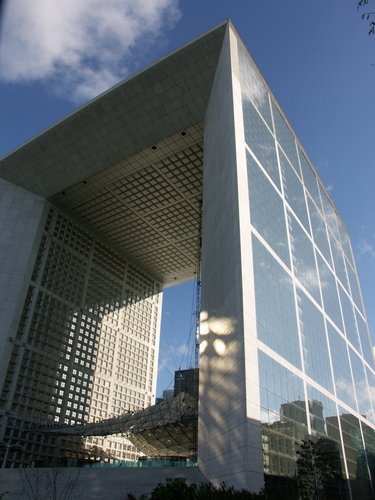Search Results for Tag: energy
Ikea Invests in More Renewable Energy

Ikea, which is the biggest home furnishings chain in the world, has announced it’s making a big commitment to clean energy. The company has purchased a big wind farm in Scotland and plans to install almost 40,000 solar panels on its stores in the United Kingdom.
Ikea bought the 12.3 megawatt wind farm in Scotland as a way to promote clean energy use in its stores and facilities and it looks like that plan will work: the energy from that wind farm could generate 30% of the energy used by all of Ikea’s stores in the UK. And the solar panels will produce another 5% of the stores’ energy. Best of all, Ikea will end up saving money in the long-run by cutting down on all those energy bills!
Does Going Green Pay Off?

We wanted to share an interesting article we found on the Wall Street Journal today about the costs of going green. Across Europe, towns and cities are investing in sustainable architecture – buildings that run on clean energy, like solar or wind power.
The article says even though we might assume eco-friendly buildings will save on energy bills and increase property values, that hasn’t actually been proven yet. The costs of constructing green buildings is in itself quite expensive, and it’s too soon to back up the claim that the investment pays off in the end.
So is Europe moving too fast with its boom in green construction? Or will lower utility bills and higher property value will make up for the costs quickly? Let us know what you think…
The Solar Groupon

The city of San Francisco in the United States is taking a unique approach to the problem of expensive solar power systems. City officials have introduced a new program called “Solar@Work” to help small and medium-sized businesses in the area afford solar power.
Big businesses are usually able to pay for massive solar power systems, and individual home owners can buy small panels to install on their houses. But for mid-sized companies, or even small companies, those options just don’t work. The idea behind Solar@Work is to allow those businesses to team up and purchase (and install) solar power systems at a discounted rate. So the more companies that decide to go in on the deal, the lower the price!
One city official called it the “Groupon” for solar power – after the very popular group coupon system that’s become a huge hit across the world. By the end of the year, Solar@Work is hoping to have installed solar power systems on about 20 buildings during the test phase of the project. If it goes well, the concept could be expanded across California, the U.S. and the world.
Is this the way to reduce the cost of solar energy for everyone in the future? Let us know what you think!
South Sudan’s Hope

After winning independence over the weekend, The Republic of South Sudan is the world’s newest country. Even though the nation is just starting out, it’s rich in natural resources and has huge potential to grow and prosper – especially when it comes to clean energy.
One of the World Bank’s chief technicians, Daniel Kammen, took a video of South Sudan’s Fula Rapids while he was on site recently. The force and power of the White Nile River’s rapids make them the perfect source for hydropower. Some experts believe the Fula Rapids alone could produce 60 megawatts of electricity – and that in a country that generates less than 200 megawatts total right now.
Because South Sudan is largely undeveloped, officials there have the chance to start from the very beginning with renewable energy generation and green-friendly development practices. But one big question remains: will renewable energy projects benefit the country’s poor, too? Or will its new-found natural wealth end up in the hands of the few?
Japan Turning to Renewables

Energy in Japan has become a very important issues since the nuclear crisis at Fukushima began. Japanese Prime Minister Naoto Kan said on Tuesday that the country will now shift its energy focus away from nuclear power and towards renewable sources. Currently, Japan’s energy plan sees the country getting 50% of its electricity from nuclear power and about 20% from renewable by the year 2030. But Kan said that’s what he wants to change, especially in light of Fukushima, and wind power will play a big role.
Japan will start supporting biomass and solar power, too. Plus, Japan is home to tons of hot springs, and they represent enormous untapped potential for geothermal energy. In fact, Japan could even produce enough geothermal power to export to other countries in Asia.
We know Japan has gone back to the drawing board since the Fukushima crisis, and Germany, too, is reexamining its commitment to nuclear power. Do you think we’ll see this trend in other parts of the world too? Or is nuclear power too entrenched into the energy system where you live?








Feedback